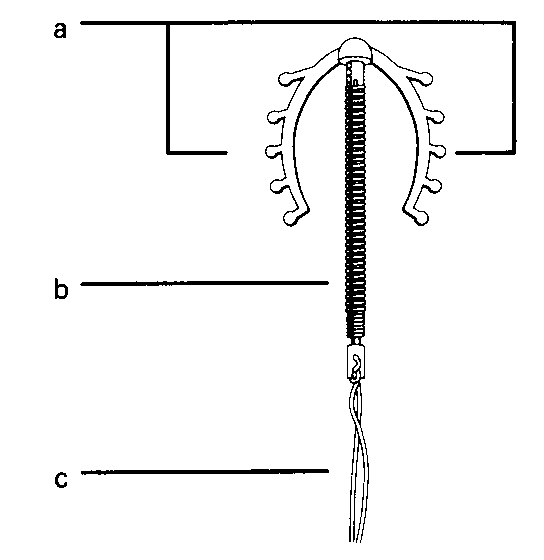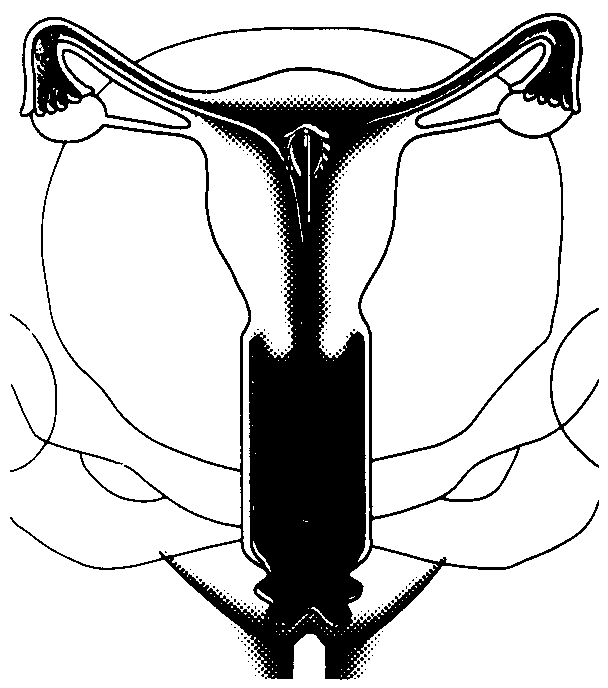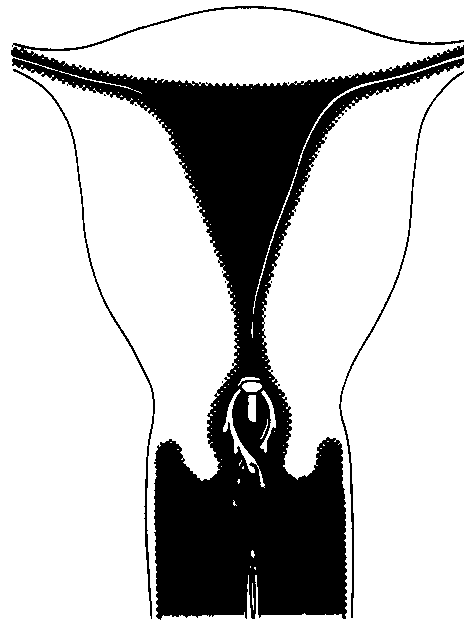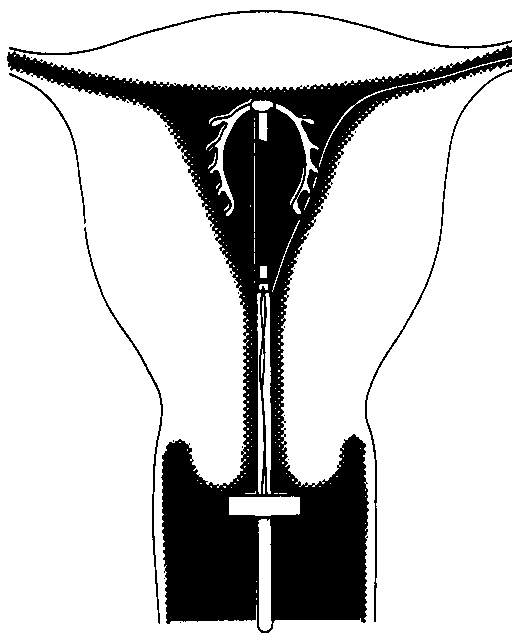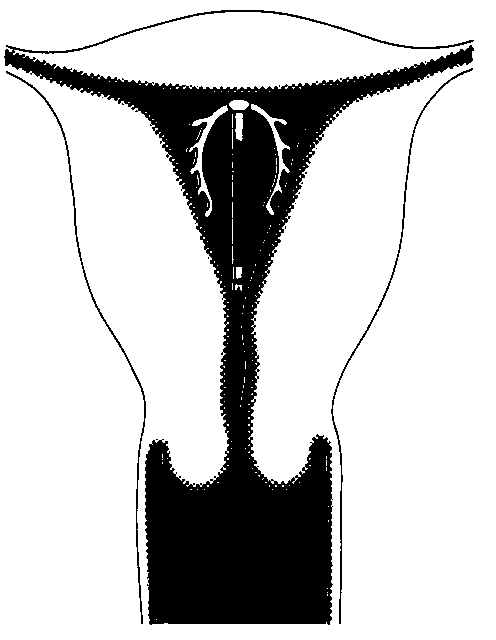Multiload Cu250,
Short Cu250 and
Cu375
Birth control is an issue which at one time or another you share with many women all over the world. Fortunately, there are now a number of reliable and simple methods of preventing pregnancy. One of these is called intrauterine contraception. This method, although not guaranteeing absolute protection against pregnancy, is indeed very reliable. The intrauterine device (IUD) which your doctor has advised you to use is called Multiload.
Before starting to tell you how Multiload works, we would first like to explain a few things.
A short anatomy lesson
The womb or uterus (c) is situated in the lower part of the abdomen, just above the pubic bone. The uterus is more or less pear-shaped, has muscular walls and is slightly smaller than your fist. Access to the uterus is by means of the vagina (e). At the top and on both sides of the uterus are the fallopian tubes (a) with ovaries (b) beneath them. The ovaries, fallopian tubes, uterus and vagina together form the female organs of reproduction. They do not function until puberty.
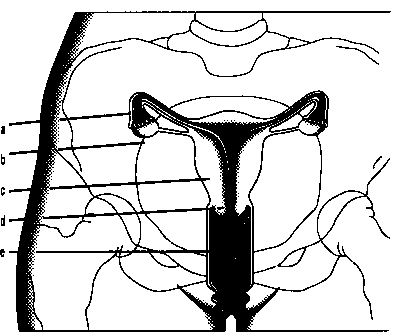
Figure 1
- fallopian tubes
- ovaries
- uterus
- cervix
- vagina
From the time when a woman starts menstruating she is sexually mature. Approximately every four weeks a tiny egg cell (which is smaller than this dot.) ripens in one of the ovaries. This egg cell (a) travels to the fallopian tube where it may be fertilised with male seed cells (sperms = b) or not.
Meanwhile, the uterus prepares to receive a fertilised egg. The inside of the uterus is lined with a specialised mucous membrane (c) through which run many tiny blood vessels. About the time when an egg is ripe for fertilisation, this membrane - the endometrium - becomes twice as thick as normal and the blood vessels supply it with an extra quantity of blood.
If the egg in the fallopian tube is not fertilised, a part of the endometrium is shed after fourteen days together with a quantity of blood. In other words, menstruation (d) takes place.
If the egg is fertilised, it travels from the fallopian tube to the uterus. Here, it (e) implants in the
Figure 2
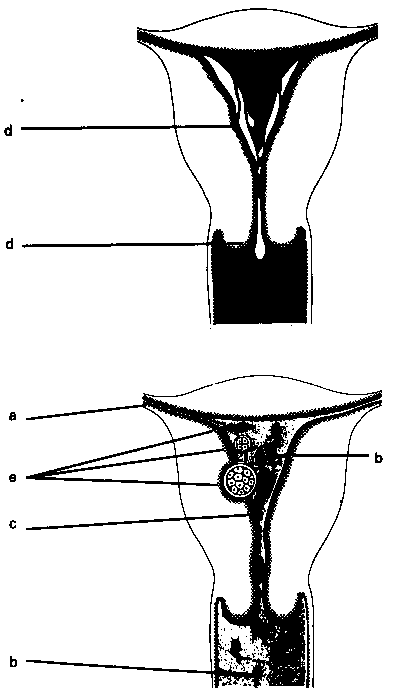
endometrium, generally high up in the uterus. This whole process takes about one week.
When implantation occurs, the endometrium is not shed and no menstruation takes place.
The background to IUDs, an age-old method rediscovered
For more than 2000 years it has been known that pregnancy could be prevented by inserting objects such as a stone, a ring or a wire into the uterus. Since the start of this century doctors have carried out extensive research in order to develop a reliable way of contraception based on this age-old knowledge. Why lUDs prevent pregnancy is not exactly known, but studies point towards two possible actions. They may prevent fertilisation by their action on the fallopian tube; alternatively should an egg be fertilised they may prevent implantation in the uterus.
Early devices were made of metals such as gold, silver and stainless steel. In the 1940s and 50s, pliable plastics were used to create devices such as the 'loop' and 'coil'. About 1965, it was discovered that by covering an IUD with a layer of copper its contraceptive reliability was increased.
Copper-carrying lUDs are effective at a smaller overall size than lUDs without copper. This gives copper lUDs the advantage of being easier to insert.
Multiload
There are various types of lUDs in existence. One of these is Multiload.
It consists of a small plastic rod wound with copper wire and provided with two flexible plastic arms and a nylon thread (Figure 3).
continued
